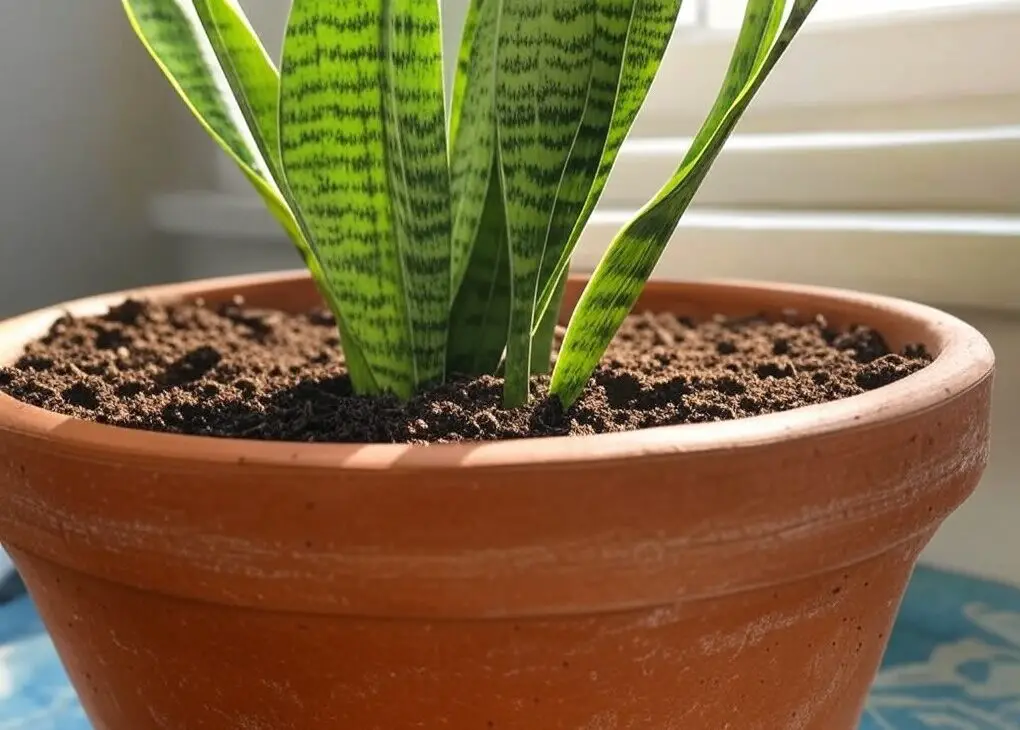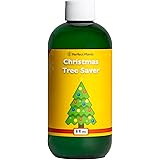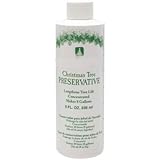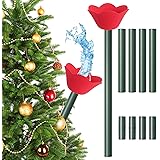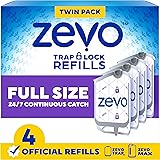Snake plants, known for their low-maintenance and air-purifying qualities, are popular for indoor gardening. When propagating snake plants, the soil plays a crucial role in the success of the process. The right soil ensures proper drainage, aeration, and nutrient availability, which are essential for healthy root development and plant growth.
In this article, we will explore the best soil for propagating snake plants, discuss key considerations, and provide practical tips for optimal results.
Understanding the Importance of Soil for Snake Plant Propagation
Snake plants thrive in well-draining soil that allows roots to breathe and prevents waterlogging. The soil’s structure, pH level, and organic content are critical factors that influence the propagation success. By understanding these elements, gardeners can create or select the ideal soil mix for their snake plants.
Key Characteristics of the Best Soil for Snake Plants
- Drainage: The soil must drain excess water quickly to prevent root rot.
- Aeration: The soil should allow air to reach the roots, promoting healthy root growth.
- pH Level: Snake plants prefer a slightly acidic to neutral soil pH, typically between 6.1 and 7.0.
- Organic Matter: Incorporating organic matter improves soil structure and nutrient availability.
Read More: Can Jade Plants Thrive In Water?
Components of the Ideal Propagation Soil
The best soil for propagating snake plants is a balanced mix of various components that ensure proper drainage, aeration, and nutrient supply. Here are the key components to consider:
1. Potting Soil Base
A high-quality potting soil serves as the foundation of the mix. It provides the necessary structure and nutrients for plant growth. Look for a potting soil that is specifically designed for indoor plants or tropical plants, as these are usually formulated to retain moisture but drain excess water effectively.
2. Perlite or Sand
Adding perlite or sand improves drainage and aeration in the soil. Perlite, in particular, is a popular choice because it is lightweight and helps prevent waterlogging. A general ratio of 1 part perlite to 2 parts potting soil is a good starting point, but this can be adjusted based on the specific needs of your snake plant.
3. Peat Moss or Coconut Coir
Peat moss or coconut coir adds organic matter to the soil, improving its water retention and nutrient-holding capacity. These materials are also acidic, which helps maintain the optimal pH for snake plants. Use a small amount (about 10-20% of the total mix) to avoid making the soil too acidic.
Read More: Why Is My Cast Iron Plant Turning Yellow?
4. Compost or Worm Castings
Incorporating compost or worm castings into the soil mix provides essential nutrients for the snake plant. These organic amendments release nutrients slowly as the plant grows, promoting healthy development. However, be cautious not to over-fertilize, as snake plants prefer a balanced nutrient profile.
Common Mistakes to Avoid When Preparing Soil for Snake Plant Propagation
While preparing the soil for propagating snake plants, there are several common mistakes that can hinder the success of the process. Being aware of these pitfalls can help you create a more effective soil mix.
1. Using Soil with Poor Drainage
Soils that retain too much water can lead to root rot and poor aeration, which are detrimental to snake plant propagation. Avoid using garden soil or heavy clay soils, as they are prone to waterlogging.
2. Overlooking pH Levels
Snake plants prefer a slightly acidic to neutral soil pH. Using soil that is too alkaline or too acidic can stress the plant and reduce its chances of successful propagation.
3. Not Sterilizing the Soil
Fungal spores and pathogens in the soil can infect the plant during propagation. Sterilizing the soil before use can help prevent these issues and ensure a healthy start for the propagated plant.
Step-by-Step Guide to Preparing the Best Soil for Snake Plant Propagation
Preparing the ideal soil for propagating snake plants involves mixing the right components in the correct proportions. Follow these steps to create a well-balanced soil mix:
- Gather Materials: Collect high-quality potting soil, perlite or sand, peat moss or coconut coir, and compost or worm castings.
- Sterilize the Soil: Bake the potting soil in a preheated oven at 300°F (150°C) for 30 minutes to eliminate any pathogens or fungi.
- Mix the Components: In a large container, combine 2 parts potting soil, 1 part perlite or sand, and a small amount of peat moss or coconut coir. Add a handful of compost or worm castings for nutrient enrichment.
- Adjust the pH: Test the pH of the soil mix using a soil testing kit. If necessary, add a small amount of lime or sulfur to adjust the pH to the desired range.
- Moisten the Soil: Lightly moisten the soil mix with water until it is damp but not soggy. This ensures the soil is ready for planting.
Practical Takeaways and Actionable Insights
Now that you know the components of the best soil for propagating snake plants, here are some practical tips to help you achieve success:
- Start with High-Quality Components: Invest in good-quality potting soil and other materials to ensure the best results.
- Monitor Drainage: After planting, observe how quickly the soil drains and adjust the mix if necessary.
- Keep the Soil Moist but Not Waterlogged: Overwatering is a common mistake that can lead to root rot. Water sparingly but ensure the soil remains moist.
- Provide Proper Lighting and Temperature: In addition to the right soil, ensure your snake plant is placed in bright, indirect light and maintained at a consistent temperature between 65°F and 75°F (18°C to 24°C).
Frequently Asked Questions (FAQs)
The ideal pH for snake plant soil is slightly acidic to neutral, typically between 6.1 and 7.0. This range provides the best conditions for nutrient availability and root growth.
Yes, cactus soil can be used for propagating snake plants, as it is designed for good drainage and aeration. However, you may need to adjust the pH if the cactus soil is too alkaline.
Water the soil sparingly during propagation. The soil should be kept moist but not waterlogged. Overwatering can lead to root rot and poor propagation results.
Yes, snake plants can be propagated in water. However, using soil is generally more effective and promotes healthier root development. Water propagation is best for leaf cuttings and should be transitioned to soil once roots develop.
Signs of overwatering in snake plants include yellowing leaves, soft or mushy stems, and a sour smell from the soil. If you notice these symptoms, stop watering immediately and repot the plant in fresh, well-draining soil.
The propagation time for snake plants can vary depending on the method used. Leaf cuttings in water may develop roots within 1-2 months, while division or soil propagation can take 2-3 months to establish a new plant.
Regular potting soil can be used for snake plants, but it may require amendments like perlite or sand to improve drainage and aeration. Snake plants prefer a well-draining mix to prevent root rot.
Compost adds organic matter to the soil, improving its structure and nutrient availability. It also supports beneficial microorganisms that promote healthy plant growth. However, use compost in moderation to avoid over-fertilizing the plant.
Conclusion
Selecting the best soil for propagating snake plants is crucial for their successful growth and development. By understanding the key characteristics of the soil and avoiding common mistakes, you can create a well-balanced mix that provides optimal conditions for your snake plant. Remember to monitor drainage, maintain the right pH, and keep the soil moist but not waterlogged. With the right soil and proper care, your snake plant propagation efforts are sure to thrive.
If you have any further questions or would like to share your experiences with snake plant propagation, feel free to leave a comment below!
Auto Amazon Links: No products found.
Perfect Plants Christmas Tree Saver 8oz. | Easy Use Xmas Tree Preserver Food | Have Healthy Green Christmas Trees All Holiday Season
$9.97 (as of December 15, 2025 05:17 GMT +00:00 - More info- Product prices and availability are accurate as of the date/time indicated and are subject to change. Any price and availability information displayed on [relevant Amazon Site(s), as applicable] at the time of purchase will apply to the purchase of this product.
FirEver Pure Christmas Tree Food | Preserver Additive & Season Extender for Live Xmas Trees | Keep It Green, Reduce Needle-Drop | Miracle Freshness (8 oz)
$14.99 (as of December 15, 2025 05:17 GMT +00:00 - More info- Product prices and availability are accurate as of the date/time indicated and are subject to change. Any price and availability information displayed on [relevant Amazon Site(s), as applicable] at the time of purchase will apply to the purchase of this product.
Rocky Mountain Goods Christmas Tree Food - 8 oz Tree Preservative - Reduce Needle Drop - Greener Scent - Fir, Pine, Spruce Trees - Extend Tree Life
$9.95 (as of December 15, 2025 05:17 GMT +00:00 - More info- Product prices and availability are accurate as of the date/time indicated and are subject to change. Any price and availability information displayed on [relevant Amazon Site(s), as applicable] at the time of purchase will apply to the purchase of this product.
VICAMB 39.3 Inch Christmas Tree Watering Funnel,Christmas Tree Watering System Device,Long Tree Watering Funnel Spout for Indoor Outdoor Xmas Tree
$17.99 (as of December 15, 2025 05:17 GMT +00:00 - More info- Product prices and availability are accurate as of the date/time indicated and are subject to change. Any price and availability information displayed on [relevant Amazon Site(s), as applicable] at the time of purchase will apply to the purchase of this product.
EZMeetU Christmas Tree Watering Funnel, 47 Inch Flower Shape Adjustable 6 Section Design, Christmas Tree Watering System, Christmas Tree Waterer, Long Funnel Wide Opening Reusable, Plant Watering Tool
$16.99 (as of December 15, 2025 05:17 GMT +00:00 - More info- Product prices and availability are accurate as of the date/time indicated and are subject to change. Any price and availability information displayed on [relevant Amazon Site(s), as applicable] at the time of purchase will apply to the purchase of this product.
Snow Joe Premium Enviro Blend Ice Melt, Green-Coated Deicer Crystals, 50 lb - Safer Melter for Vegetation, Concrete & Metals w/ Anti-Corrosion Calcium Magnesium Acetate
$32.97 (as of December 12, 2025 19:27 GMT +00:00 - More info- Product prices and availability are accurate as of the date/time indicated and are subject to change. Any price and availability information displayed on [relevant Amazon Site(s), as applicable] at the time of purchase will apply to the purchase of this product.
Muddy Mat® Shown on TV Super Absorbent Microfiber Dog Door Mat for Muddy Paws, Non-Slip Washable Pet Rug, Quick Dry Chenille Entryway Carpet, Machine Washable Indoor Outdoor mat, Grey 30"x19"
$24.95 (as of December 12, 2025 19:27 GMT +00:00 - More info- Product prices and availability are accurate as of the date/time indicated and are subject to change. Any price and availability information displayed on [relevant Amazon Site(s), as applicable] at the time of purchase will apply to the purchase of this product.
ivtivfu Rolling Grill Basket, Removable Wooden Handle, 304 Stainless Steel, Nesting BBQ Tools, Smoker Grilling Accessories for Vegetable, Outdoor Cooking Camping, Birthday Gifts for Men Dad Husband
$25.99 (as of December 12, 2025 19:27 GMT +00:00 - More info- Product prices and availability are accurate as of the date/time indicated and are subject to change. Any price and availability information displayed on [relevant Amazon Site(s), as applicable] at the time of purchase will apply to the purchase of this product.
XXXFLOWER Plant Terrarium with Wooden Stand, Air Planter Bulb Glass Vase Metal Swivel Holder Retro Tabletop for Hydroponics Home Garden Office Decoration - 3 Bulb Vase
$18.98 (as of December 12, 2025 19:27 GMT +00:00 - More info- Product prices and availability are accurate as of the date/time indicated and are subject to change. Any price and availability information displayed on [relevant Amazon Site(s), as applicable] at the time of purchase will apply to the purchase of this product.
Zevo Flying Insect Trap Official Refill Cartridges - Fits Both Zevo Trap & MAX Indoor Fly Trap - Authentic Trap+Lock Technology to Catch Gnats, House & Fruit Flys (4 Official Refill Cartridges)
$14.97 (as of December 12, 2025 19:27 GMT +00:00 - More info- Product prices and availability are accurate as of the date/time indicated and are subject to change. Any price and availability information displayed on [relevant Amazon Site(s), as applicable] at the time of purchase will apply to the purchase of this product.

